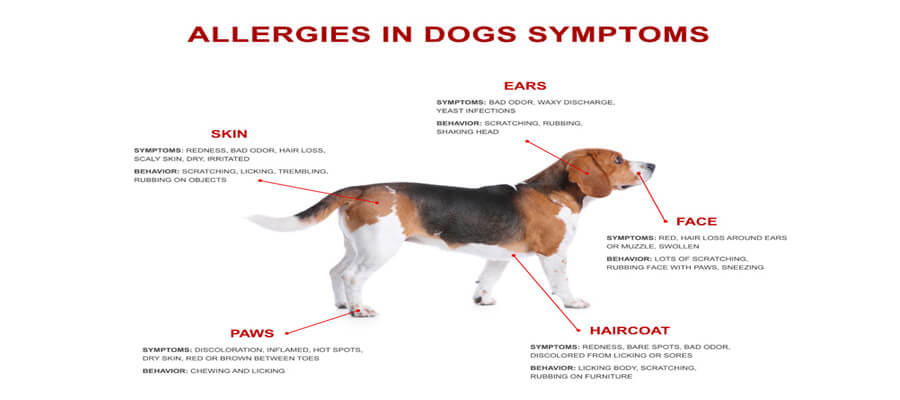
What to Do If Your Dog Has an Allergic Reaction
What to Do If Your Dog Has an Allergic Reaction: A Complete Guide for Pet Owners
Introduction
Just like humans, dogs can experience allergic reactions to a variety of substances, including food, pollen, insect bites, or medications. These reactions can range from mild to severe and, in some cases, can be life-threatening. Understanding how to recognize the signs of an allergic reaction and what steps to take can help ensure your dog's safety and well-being.
1. Recognizing Allergic Reactions in Dogs
Common Symptoms
The first step in managing an allergic reaction is recognizing the symptoms. Common signs include:
Essentials for Your Newly Adopted Pet
Welcoming a shelter pet into your life is a beautiful journey. Here are some handpicked items to help your new friend feel safe, loved, and right at home:
- Itching and Scratching: Dogs may scratch at their skin, bite their paws, or rub against furniture or the ground.
- Red or Inflamed Skin: Look for redness, swelling, or hot spots on the skin.
- Digestive Issues: Vomiting, diarrhea, or changes in appetite can indicate food allergies.
- Respiratory Problems: Coughing, sneezing, or difficulty breathing may occur with allergies related to environmental triggers.
- Swelling: Noticeable swelling around the face, ears, or paws, which may indicate a more serious reaction.
Anaphylaxis
In rare cases, dogs can experience anaphylaxis, a severe allergic reaction that can be life-threatening. Signs include:
- Difficulty breathing or swallowing
- Rapid heart rate
- Weakness or lethargy
- Collapse or fainting
If you observe any of these severe symptoms, seek immediate veterinary care.
2. Immediate Actions to Take
Stay Calm
If your dog shows signs of an allergic reaction, remain calm. Your dog can sense your anxiety, which may exacerbate their distress.
Remove the Allergen
If you suspect the reaction is due to a specific allergen (like a food item or plant), remove your dog from the source as quickly as possible. For insect bites, gently removing the stinger may help alleviate symptoms.
Wash Affected Areas
If the reaction is skin-related, wash the affected area with mild soap and water to help remove any irritants.
Apply Cold Compress
For localized swelling or hot spots, applying a cold compress can provide relief. Use a clean cloth soaked in cold water and apply it to the area for 10-15 minutes.
3. Home Remedies for Mild Reactions
Oatmeal Baths
An oatmeal bath can soothe itchy skin. Use colloidal oatmeal products or finely ground oats in lukewarm water to help relieve discomfort.
Apple Cider Vinegar
Diluted apple cider vinegar can act as a natural antiseptic and may help with skin irritations. Mix equal parts water and vinegar and apply it gently to the affected area. Always check with your vet before trying new remedies.
Hydration
Ensure your dog has access to fresh water, as staying hydrated can aid in recovery.
4. When to Contact a Veterinarian
Mild Reactions
If your dog exhibits mild symptoms, monitor them closely. If symptoms persist for more than a few hours or worsen, consult your veterinarian.
Severe Reactions
If your dog shows signs of severe allergic reactions or anaphylaxis, take them to the vet or an emergency animal hospital immediately. Quick treatment can be crucial.
5. Preventing Future Allergic Reactions
Identify Triggers
Work with your veterinarian to identify specific allergens that may affect your dog. This may involve allergy testing or an elimination diet to pinpoint food allergies.
Limit Exposure
Once you know your dog's allergens, take steps to limit their exposure:
- Food Allergies: Read labels carefully and avoid known allergens in their diet.
- Environmental Allergies: Regular grooming can help reduce pollen and other irritants. Consider using air purifiers in your home to minimize allergens.
Medications
Discuss with your vet about medications such as antihistamines or corticosteroids that may help manage your dog’s allergies. These should only be used under veterinary guidance.
6. Emergency Preparedness
Pet First Aid Kit
Having a pet first aid kit can be invaluable. Include items like gauze, antiseptic wipes, tweezers (for removing ticks), and a contact list for your veterinarian and emergency animal clinics.
Training and Education
Educate yourself about your dog's specific health needs and how to respond in emergencies. Knowing how to act can make a significant difference in a crisis.
Conclusion
Understanding how to recognize and manage allergic reactions in dogs is vital for every pet owner. By staying informed, acting quickly, and preventing future exposures, you can help keep your furry friend healthy and happy. Always consult your veterinarian for guidance tailored to your dog’s specific needs.
With these steps, you’ll be better prepared to handle any allergic reactions that may arise, ensuring your dog receives the care they deserve.
Affiliate Products
We may earn a small commission when you shop through our links — it helps us keep sharing love and care for every dog out there, at no extra cost to you.
Up to 75% Discount

Dog Collar with Health Monitoring
BUY NOW »
Up to 55% Discount

Luxury Faux Furhuge Napping Bed
BUY NOW »

